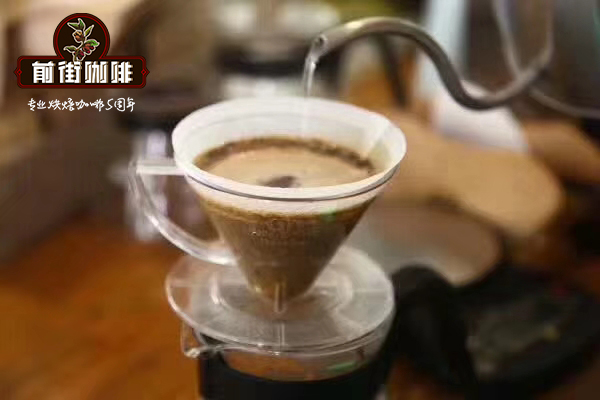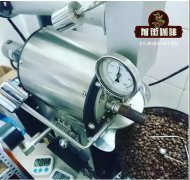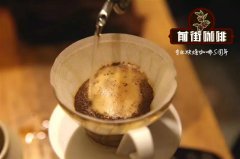Starbucks Hawaiian Cafe Fog KAU Coffee is good? Starbucks Hawaiian Cafe Fog KAU Coffee tastes like

Professional coffee knowledge exchange more coffee bean information please follow the coffee workshop (Wechat official account cafe_style)
Coffee was first introduced to Hawaii in 1817 by Don Francisco de Paula Marin, the first Spanish consultant during the reign of King Kamehameha. But it was not planted until 1825 when Oahu Mayor Chie Boki introduced coffee from Brazil and successfully planted it in Manoa Valley, and coffee was grown all over the island.
Bourbon coffee was introduced to the Big Island around 1828 and began to be grown on a large scale on the island of Kauai in 1836, but it was wiped out by diseases and insect pests in 1858, and the only one who survived was the KONA producing area of the island.
Hawaii is an island with beautiful scenery and rich products, which grows a lot of cocoa, hazelnut and coffee. The price of coffee is the best for farmers to harvest the most. Hawaii began to grow coffee as far back as the 18th century, mostly on Kauai Island and the Big Island of Hawaii, because of its ideal island climate, fertile volcanic ash soil and careful treatment. The appearance of each Hawaiian coffee bean is very uniform, complete, with few defects and lack of horn beans, but the limited planting area and high wages in the United States make Hawaiian coffee beans very expensive. But Hawaiian coffee beans, which are perfectly clean and full of unique tropical fruit aromas, cannot be replaced by other coffee.
Compared with Jamaica Blue Mountain Coffee, both kinds of coffee have mild acidity and delicate fruit with pink and tender sweetness. however, due to the strict quality control of Hawaiian coffee beans and advanced low-temperature storage equipment, the quality of Hawaiian coffee beans has always been maintained at a high level, unlike the occasional murmur of poor evaluation of blue mountain coffee.
The southernmost area of the Big Island of Hawaii is the KAU Cafe Zone, a new coffee growing area in Hawaii that began in the 1990s. These areas used to grow sugar cane plantations, but the profits of sugar cane plantations have become low due to market factors. Many sugar cane plantations have led to the displacement of farmers, unable to make a living, and coffee cultivation is bringing hope to everyone. Despite the ideal growth conditions, they initially made active efforts to get rid of the shadow of their time-honored Kona coffee beans.
In 2007, Coffee from Hawaii Coffee Mist won sixth and ninth places in the coffee contest held by the American Fine Coffee Association (SCAA), and then won the World Coffee of the year Award again in 2011.
This coffee-producing area actually went unnoticed before, and Chris Manfredi, a local coffee grower, hired agronomic experts and consultants to help local small-scale coffee farmers succeed. After several years of winning the coffee competition of the American boutique society, the coffee beans produced by KAU caf é in Hawaii have been regarded as one of the best coffee in the world.
Qianjie coffee is recommended to be brewed in 89-91 degrees water for about one minute and fifty seconds. With creamy, milk chocolate and almond sweetness.
Related recommendation: Hawaiian kona Kona Coffee introduces how to brew Hawaiian Kona Coffee
Important Notice :
前街咖啡 FrontStreet Coffee has moved to new addredd:
FrontStreet Coffee Address: 315,Donghua East Road,GuangZhou
Tel:020 38364473
- Prev

How to bake Hawaiian coffee? what baking degree is suitable for Hawaiian Kona coffee?
Professional coffee knowledge exchange more coffee bean information please follow the coffee workshop (Wechat official account cafe_style) Hawaii is a beautiful and fertile island growing a lot of fruit cocoa hazelnuts and coffee, the price of coffee is the best for farmers to harvest the most. Hawaii began to grow coffee as early as the 18th century, most of it was grown on the island of Kauai and the island of Hawaii, because of non-
- Next

Introduction of Hawaiian boutique coffee beans the taste and flavor of yellow Kaddura in Maui, Hawaii
Professional coffee knowledge exchange more coffee bean information please follow the coffee workshop (Wechat official account cafe_style) Kaddura (Caturra) is a natural variety of Arabica variety bourbon, was found in Brazil in 1937, its tree is not as tall as bourbon, shorter
Related
- Detailed explanation of Jadeite planting Land in Panamanian Jadeite Manor introduction to the grading system of Jadeite competitive bidding, Red bid, Green bid and Rose Summer
- Story of Coffee planting in Brenka region of Costa Rica Stonehenge Manor anaerobic heavy honey treatment of flavor mouth
- What's on the barrel of Blue Mountain Coffee beans?
- Can American coffee also pull flowers? How to use hot American style to pull out a good-looking pattern?
- Can you make a cold extract with coffee beans? What is the right proportion for cold-extracted coffee formula?
- Indonesian PWN Gold Mandrine Coffee Origin Features Flavor How to Chong? Mandolin coffee is American.
- A brief introduction to the flavor characteristics of Brazilian yellow bourbon coffee beans
- What is the effect of different water quality on the flavor of cold-extracted coffee? What kind of water is best for brewing coffee?
- Why do you think of Rose Summer whenever you mention Panamanian coffee?
- Introduction to the characteristics of authentic blue mountain coffee bean producing areas? What is the CIB Coffee Authority in Jamaica?

